We use information collected through cookies and similar technologies to improve your experience on our site, analyze how you use it and for marketing purposes.
Your privacy settings
We and our partners use information collected through cookies and similar technologies to improve your experience on our site, analyze how you use it and for marketing purposes. Because we respect your right to privacy, you can choose not to allow some types of cookies. However, blocking some types of cookies may impact your experience of the site and the services we are able to offer. In some cases, data obtained from cookies is shared with third parties for analytics or marketing reasons. You can exercise your right to opt-out of that sharing at any time by disabling cookies.
Manage Consent Preferences
Necessary
Always ON
These cookies and scripts are necessary for the website to function and cannot be switched off. They are usually only set in response to actions made by you which amount to a request for services, such as setting your privacy preferences, logging in or filling in forms. You can set your browser to block oralert you about these cookies, but some parts of the site will not then work. These cookies do not store any personally identifiable information.
Analytics
These cookies and scripts allow us to count visits and traffic sources, so we can measure and improve the performance of our site. They help us know which pages are the most and least popular and see how visitors move around the site. All information these cookies collect is aggregated and therefore anonymous. If you do not allow these cookies and scripts, we will not know when you have visited our site.
Embedded Videos
These cookies and scripts may be set through our site by external video hosting services likeYouTube or Vimeo. They may be used to deliver video content on our website. It's possible for the video provider to build a profile of your interests and show you relevant adverts on this or other websites. They do not directly store personal information, but are based on uniquely identifying your browser and internet device. If you do not allow these cookies or scripts it is possible that embedded video will not function as expected.
Google Fonts
Google Fonts is a font embedding service library. Google Fonts are stored on Google's CDN. The Google Fonts API is designed to limit the collection, storage, and use of end-user data to only what is needed to serve fonts efficiently. Use of Google Fonts API is unauthenticated. No cookies are sent by website visitors to the Google Fonts API. Requests to the Google Fonts API are made to resource-specific domains, such as fonts.googleapis.com or fonts.gstatic.com. This means your font requests are separate from and don't contain any credentials you send to google.com while using other Google services that are authenticated, such as Gmail.
Marketing
These cookies and scripts may be set through our site by our advertising partners. They may be used by those companies to build a profile of your interests and show you relevant adverts on other sites. They do not store directly personal information, but are based on uniquely identifying your browser and internet device. If you do not allow these cookies and scripts, you will experience less targeted advertising.
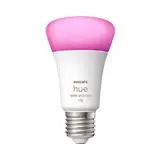
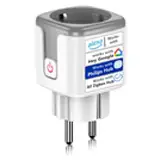
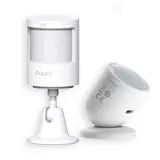
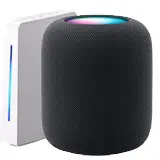
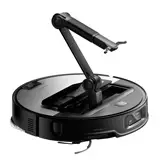

Smart security cameras: how to choose and where to install them
Worried about the security of your home or business? Smart security cameras are a great way to keep an eye on everything, and from anywhere! But with so many options on the market, how do you know which one to choose and where to place it strategically? Don't worry, we will guide you step by step to become a smart security expert.
What are Smart Security Cameras and why do you need them?
Smart security cameras are much more than just video recorders. They are internet-connected devices that allow you to monitor your property in real time from your smartphone, tablet or computer. They can send you instant alerts if they detect motion, record high-definition video, and even allow you to communicate with the person in front of the camera.
Why do you need them? Here are some compelling reasons:
Key Factors in Choosing a Smart Security Camera
Before you jump into buying the first camera you see, consider these important factors:
1. Camera Type: Indoor vs. Outdoor
It is crucial to choose the right type of camera for the location where it will be installed. Indoor cameras are usually smaller and more discreet, while outdoor cameras are designed to withstand inclement weather.
Video Resolution: Sharpness Matters!
Video resolution determines image quality. Higher resolution means sharper and more detailed images, making it easier to identify faces and objects.
3. Field of View: How much does the camera cover?
The field of view (FOV) is the angle of view of the camera. A wider FOV allows you to cover a larger area with a single camera.
4. Night Vision: Don't Stay Dark
Night vision is essential for monitoring your property at night. The cameras use infrared (IR) lights to capture images in low light conditions.
5. Video Storage: Where Will You Store the Recordings?
Video storage is a crucial aspect. You have several options:
6. Motion Detection and Notifications: Stay Informed
Motion detection allows you to receive instant alerts on your smartphone when the camera detects activity. Look for cameras with customization options to reduce false alarms (e.g., adjust sensitivity or define detection zones).
7. Bidirectional Audio: Talk to Whoever is Next to You!
Two-way audio allows you to hear what is happening around the camera and talk through it. Useful for greeting visitors, giving instructions or scaring away intruders.
8. Integration with Other Smart Devices: Create a Smart Home
If you already have other smart devices in your home (such as lights, locks or thermostats), look for cameras that integrate with them. This allows you to create automations and control everything from a single app.
9. Privacy and Security: Protect your Data
The security of your data is critical. Make sure you choose cameras from trusted brands that offer end-to-end encryption and regular security updates.
Where to Install Your Smart Security Cameras: Strategic Locations
The location of your cameras is as important as the quality of your cameras. Here are some recommendations:
Exterior: Protect your Perimeter
Interior: Discreet Surveillance
Installation Tips: Get it Right the First Time
Installing your cameras correctly is crucial for optimal performance:
Maintenance: Keep your cameras in shape
Regular maintenance is important to ensure that your cameras function properly over the long term:
Best Practices for Smart Camera Security
Here are some best practices for getting the most out of your security cameras:
Smart Camera Feature Comparison Chart
This table will help you compare different characteristics:
Conclusion: Your Home, Your Safety, Your Peace of Mind
Smart security cameras are a valuable investment to protect your home and loved ones. By choosing the right camera and placing it strategically, you can deter intruders, monitor your property in real time and have peace of mind knowing that you are protected. Remember to consider your specific needs, budget and the features that are most important to you. Don't wait any longer, take the step towards a safer home today!
Did you find this guide useful? Share it with your friends and family! And if you have any questions or tips, leave us a comment below.
Related Posts
TOP 5 facial recognition video surveillance systems
Tired of traditional video surveillance? Looking for smarter security? Facial recognition is here to stay. We no longer just record, now we analyze. In this article, we present the TOP 5 facial recognition video surveillance systems. Get ready to discover a new dimension in protecting your home, business, or property. Security…
Water Leak Sensors: How to Prevent Floods
Tired of worrying about water leaks? Home floods are a disaster. They can cause costly damage. But there's good news: water leak sensors are the solution. What are water leak sensors? Imagine small, silent guardians. That's what water leak sensors are. They detect water where it shouldn't be…
Smart alarm systems: are standalone models worth it?
Are you concerned about the security of your home or business? Smart alarm systems have revolutionized the way we protect our spaces. But do you really need a smart alarm system, and is it worth opting for a standalone model? Let's explore it in depth. These systems not only offer real-time monitoring, but ...
TOP 5 smart locks: unlock the door without a key
Tired of digging for your keys at the bottom of your bag or worrying about losing them? Smart locks are here to revolutionize your home security! Forget traditional keys and welcome convenience, security, and total control from your smartphone. Discover the future of security…